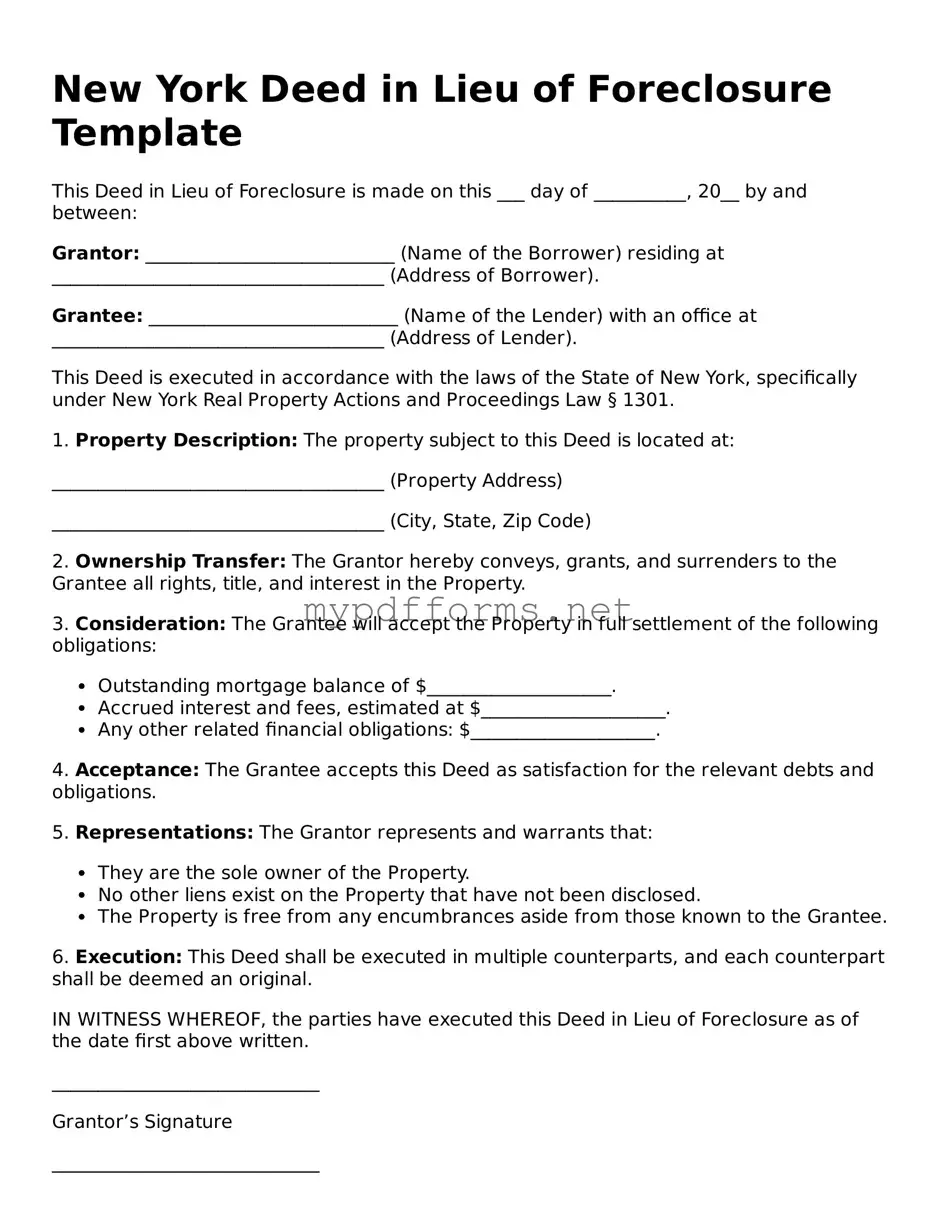The New York Deed in Lieu of Foreclosure form shares similarities with a mortgage modification agreement. Both documents aim to provide a solution to distressed homeowners facing financial difficulties. A mortgage modification agreement involves changing the terms of an existing mortgage to make payments more manageable. This may include lowering the interest rate, extending the loan term, or even reducing the principal amount owed. By contrast, a deed in lieu of foreclosure transfers ownership of the property to the lender, allowing the homeowner to avoid the lengthy foreclosure process. Both options seek to alleviate the burden on the homeowner while providing a resolution for the lender.
Another document that resembles the Deed in Lieu of Foreclosure is a short sale agreement. In a short sale, the homeowner sells the property for less than the outstanding mortgage balance, with the lender’s approval. This process allows the homeowner to avoid foreclosure while still settling their debt. Similar to a deed in lieu, a short sale can help preserve the homeowner's credit score and provide a fresh start. However, while a deed in lieu transfers ownership directly to the lender, a short sale involves selling the property to a third party, which may take longer and require more effort from the homeowner.
A third similar document is a forbearance agreement. This type of agreement allows homeowners to temporarily pause or reduce their mortgage payments due to financial hardship. During the forbearance period, lenders typically agree not to initiate foreclosure proceedings. Like a deed in lieu, the goal is to keep the homeowner in their property and avoid foreclosure. However, while a deed in lieu results in the homeowner relinquishing ownership, a forbearance agreement allows them to retain ownership while they work through their financial challenges.
A Quitclaim Deed is a legal instrument that facilitates the transfer of property rights between parties without any assurance of the title's clarity. This can become particularly useful in circumstances involving financial distress, as it helps resolve ownership complexities swiftly. If you're looking for a fillable form to create a Washington Quitclaim Deed, you can find it at https://quitclaimdocs.com/fillable-washington-quitclaim-deed.
Another document that aligns with the Deed in Lieu of Foreclosure is a loan assumption agreement. In this scenario, a third party takes over the mortgage obligations from the original borrower. This can occur when a homeowner sells their property to someone who assumes the existing mortgage. Both a loan assumption and a deed in lieu provide a way to resolve mortgage issues without going through foreclosure. However, in a loan assumption, the original homeowner may still have some liability for the mortgage, while a deed in lieu fully absolves the homeowner from their mortgage responsibilities.
Lastly, a bankruptcy filing can also be compared to a Deed in Lieu of Foreclosure. Filing for bankruptcy offers individuals a legal way to reorganize or eliminate their debts, including mortgage obligations. While both options can prevent foreclosure, bankruptcy can provide a broader financial reset, impacting all debts, not just the mortgage. A deed in lieu, on the other hand, specifically addresses the mortgage and transfers property ownership to the lender. Each option has its own implications for credit scores and future borrowing, making it essential for homeowners to consider their unique circumstances when deciding which path to take.
